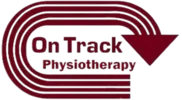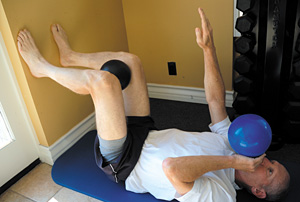Do you spend most of your day working in front of a computer?
If you answered yes, then you’d be like most other Americans. Chances are you are also spending a lot of time on your phone as well.
As a result many people will encounter some sort of achy or stiff neck that may or may not become painful. Below are 5 solutions that one should consider when experiencing neck pain and stiffness.
1) It’s never to late to address the issue, but the sooner you start the better.
I can’t tell you how many people I have seen that come to see me for neck pain which has been going on for months to years at a time. I’ll then ask them what they have been doing to resolve their pain on their own. The answer I usually get is: “nothing”, “medication”, or “hope it just went away.”
If you get one thing out of this, remember that it is never to late to start addressing the issue yourself. On the flip side, the sooner you start doing something for you pain, the sooner it will go away. The problem is that most individuals do not know where to start or a reliable system of addressing their issues so they fail to start in the first place.
The purpose of this post is to eliminate this fear.
2) Ice early, heat usually works better later
This is probably the question I get asked the most. Should I ice or should I use heat? The simple answer is that you are probably overthinking it and use whichever feels better. Ice tends to dull the pain the best from 0-48 hours after the injury. After that, heat or a topical cream such as icy-hot seems to do better. It is important to realize though that both of these provide temporary relief by altering sensation, it is not a permanent or long term solution. Some type of movement based activity is and will always be long term solution to getting you back to what you enjoy the most.
3) Early Movement
Piggy backing off the last statement made in point #2, movement will be your long term solution. The trick is finding the point of entry that is least provocative to your symptoms and building upon that motion throughout the days and week/s.
Two very simple exercises which can often be used early on are:
4) Soft Tissue Work
A lot of tension is usually held in the muscles that surround the neck for a number of reasons such as work, posture, exercise, taxes, and the boogey-man. Point being is that life in general can at times be taxing for everyone. When gone undressed these muscles become overactive and facilitate further stress in an already stressed out environment. So some type of soft tissue technique can often be effective. At On Track Physical Therapy we perform various hands on massage and myofascial techniques. Some other unique techniques we offer that can be very useful at times are: Cupping and Dry Needling (click the links to learn more about these modalities). I want to reiterate the fact that movement will always be the long term solution. All of these techniques just mentioned are most useful when followed up by some sort of movement based activity such as the ones listed in #3.
5) Breathing
If every thing you have tried thus far has failed to work. MRIs, Injections, X-rays, manipulations, and all the things listed in #1-4 have not made a difference. This may be your missing link. However, it’s not as simple as just breathing. Let me explain, I’ll try not to get to sciency on you.
Very stressful environments tend to push us toward inhalation. Think about walking on a tightrope or near the edge of a cliff. You tend to tense up and hold your breath. Unfortunately many of us tend to do this throughout the day without even realizing it because of daily stressors.
The main muscle of breathing is the diaphragm. It attaches to your ribs and low back. You breathe around 22,000 times per day. If it’s done repetitively in a state of inhalation (or stress). Then it can start to alter one’s spinal alignment causing compensation patterns all the way up through the neck. Another way people compensate is to use muscles of their neck to help with breathing. Think about someone who just got done running. They have their hands on their head and you can see all their neck muscles helping them breathe. While this may be necessary at times when working out, it should not be the case at rest. However it is very common to see people compensate with their neck when they breathe at rest. This can be addressed through a series of various exercises specific to how the individual may present in the clinic.
Would you like some help to recover faster? On Track Physical Therapy can help get you back to the things you enjoy most!

About the Author: Dr. Greg Schaible is a physical therapist and strength coach specializing in athletic performance. He attended The University of Findlay as a student athlete. As an athlete he competed in both Indoor and Outdoor Track & Field where he earned honors as a 5x Division II All-American and 6x Division II Academic All-American. In 2013 he completed Graduate School earning his Doctorate of Physical Therapy (DPT). Greg is the owner of On Track Physical Therapy in Ann Arbor, Mi. Follow On Track PT and Performance on Facebook.



